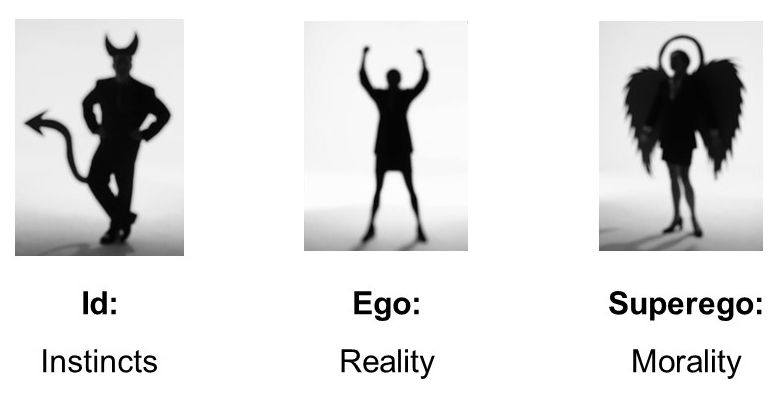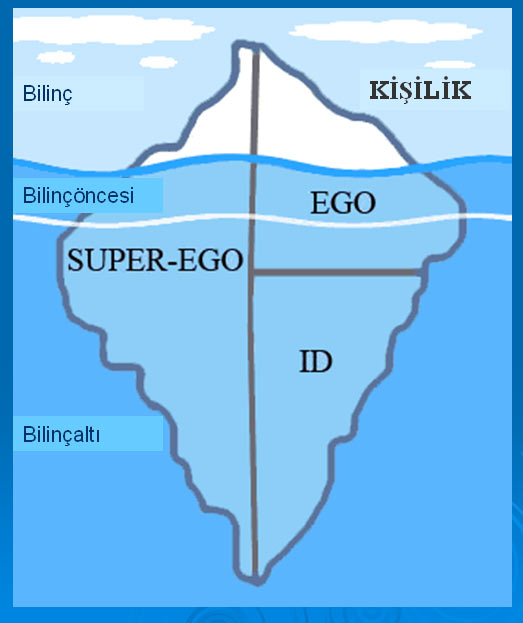How to Talk to Anyone (Junior Talker #4), DeYtH Banger [ebook reader screen .txt] 📗

- Author: DeYtH Banger
Book online «How to Talk to Anyone (Junior Talker #4), DeYtH Banger [ebook reader screen .txt] 📗». Author DeYtH Banger
Basic Assumptions
Our behavior and feelings are powerfully affected by unconscious motives:
The unconscious mind comprises mental processes that are inaccessible to consciousness but that influence judgments, feelings, or behavior (Wilson, 2002).
According to Freud (1915), the unconscious mind is the primary source of human behavior. Like an iceberg, the most important part of the mind is the part you cannot see.
Our feelings, motives, and decisions are actually powerfully influenced by our past experiences, and stored in the unconscious.
Our behavior and feelings as adults (including psychological problems) are rooted in our childhood experiences:
Psychodynamic theory states that events in our childhood have a great influence on our adult lives, shaping our personality. Events that occur in childhood can remain in the unconscious, and cause problems as adults.
Personality is shaped as the drives are modified by different conflicts at different times in childhood (during psychosexual development).
All behavior has a cause (usually unconscious), even slips of the tongue. Therefore all behavior is determined:
Psychodynamic theory is strongly determinist as it views our behavior as caused entirely by unconscious factors over which we have no control.
Unconscious thoughts and feelings can transfer to the conscious mind in the form of parapraxes, popularly known as Freudian slips or slips of the tongue. We reveal what is really on our mind by saying something we didn't mean to.
Freud believed that slips of the tongue provided an insight into the unconscious mind and that there were no accidents, every behavior (including slips of the tongue) was significant (i.e., all behavior is determined).
Personality is made up of three parts (i.e., tripartite): the id, ego, and super-ego:
The id is the primitive and instinctive component of personality. It consists of all the inherited (i.e., biological) components of personality present at birth, including the sex (life) instinct – Eros (which contains the libido), and the aggressive (death) instinct - Thanatos.
The ego develops in order to mediate between the unrealistic id and the external real world. It is the decision making component of personality.
The superego incorporates the values and morals of society which are learned from one's parents and others.
Parts of the unconscious mind (the id and superego) are in constant conflict with the conscious part of the mind (the ego). This conflict creates anxiety, which could be dealt with by the ego’s use of defense mechanisms.
Critical Evaluation
The greatest criticism of the psychodynamic approach is that it is unscientific in its analysis of human behavior. Many of the concepts central to Freud's theories are subjective, and as such, difficult to test scientifically.
For example, how is it possible to scientifically study concepts like the unconscious mind or the tripartite personality? In this respect, it could be argued that the psychodynamic perspective is unfalsifiable as its theories cannot be empirically investigated.
However, cognitive psychology has identified unconscious processes, such as procedural memory (Tulving, 1972), automatic processing (Bargh & Chartrand, 1999; Stroop, 1935), and social psychology have shown the importance of implicit processing (Greenwald & Banaji, 1995). Such empirical findings have demonstrated the role of unconscious processes in human behavior.
Kline (1989) argues that psychodynamic theory comprises a series of hypotheses, some of which are more easily tested than others, and some with more supporting evidence than others. Also, while the theories of the psychodynamic approach may not be easily tested, this does not mean that it does not have strong explanatory power.
Nevertheless, most of the evidence for psychodynamic theories is taken from Freud's case studies (e.g., Little Hans, Anna O). The main problem here is that the case studies are based on studying one person in detail, and with reference to Freud, the individuals in question are most often middle-aged women from Vienna (i.e., his patients). This makes generalizations to the wider population (e.g., the whole world) difficult.
Another problem with the case study method is that it is susceptible to researcher bias. Reexamination of Freud's own clinical work suggests that he sometimes distorted his patients' case histories to 'fit' with his theory (Sulloway, 1991).
The humanistic approach makes the criticism that the psychodynamic perspective is too deterministic. Freud suggests that all thoughts, behaviors and emotions are determined by our childhood experiences and unconscious mental processes. This is a weakness because it suggests we have no conscious free will over our behavior, leaving little room for the idea of personal agency (i.e., free will).
Finally, the psychodynamic approach can be criticized for being sexist against women. For example, Freud believed that females' penis envy made them inferior to males. He also thought that females tended to develop weaker superegos and to be more prone to anxiety than males.
Chapter 7 - Secrets (Part 4)
Id, Ego and Superego

Perhaps Freud's single most enduring and important idea was that the human psyche (personality) has more than one aspect. Freud (1923) saw the psyche structured into three parts (i.e., tripartite), the id, ego and superego, all developing at different stages in our lives. These are systems, not parts of the brain, or in any way physical.
According to Freud's model of the psyche, the id is the primitive and instinctual part of the mind that contains sexual and aggressive drives and hidden memories, the super-ego operates as a moral conscience, and the ego is the realistic part that mediates between the desires of the id and the super-ego.
Although each part of the personality comprises unique features, they interact to form a whole, and each part makes a relative contribution to an individual's behavior.
What is the id?
The id is the primitive and instinctive component of personality. It consists of all the inherited (i.e., biological) components of personality present at birth, including the sex (life) instinct – Eros (which contains the libido), and the aggressive (death) instinct - Thanatos.
The id is the impulsive (and unconscious) part of our psyche which responds directly and immediately to the instincts. The personality of the newborn child is all id and only later does it develop an ego and super-ego.
The id remains infantile in its function throughout a persons life and does not change with time or experience, as it is not in touch with the external world. The id is not affected by reality, logic or the everyday world, as it operates within the unconscious part of the mind.
The id operates on the pleasure principle (Freud, 1920) which is the idea that every wishful impulse should be satisfied immediately, regardless of the consequences. When the id achieves its demands, we experience pleasure when it is denied we experience ‘unpleasure’ or tension.

The id engages in primary process thinking, which is primitive, illogical, irrational, and fantasy oriented. This form of process thinking has no comprehension of objective reality, and is selfish and wishful in nature.
What is the ego?
The ego is 'that part of the id which has been modified by the direct influence of the external world.'
(Freud, 1923, p. 25)
The ego develops to mediate between the unrealistic id and the external real world. It is the decision-making component of personality. Ideally, the ego works by reason, whereas the id is chaotic and unreasonable.
The ego operates according to the reality principle, working out realistic ways of satisfying the id’s demands, often compromising or postponing satisfaction to avoid negative consequences of society. The ego considers social realities and norms, etiquette and rules in deciding how to behave.
Like the id, the ego seeks pleasure (i.e., tension reduction) and avoids pain, but unlike the id, the ego is concerned with devising a realistic strategy to obtain pleasure. The ego has no concept of right or wrong; something is good simply if it achieves its end of satisfying without causing harm to itself or the id.
Often the ego is weak relative to the headstrong id, and the best the ego can do is stay on, pointing the id in the right direction and claiming some credit at the end as if the action were its own.
Freud made the analogy of the id being a horse while the ego is the rider. The ego is 'like a man on horseback, who has to hold in check the superior strength of the horse.'
(Freud, 1923, p.15)
If the ego fails in its attempt to use the reality principle, and anxiety is experienced, unconscious defense mechanisms are employed, to help ward off unpleasant feelings (i.e., anxiety) or make good things feel better for the individual.
The ego engages in secondary process thinking, which is rational, realistic, and orientated towards problem-solving. If a plan of action does not work, then it is thought through again until a solution is found. This is known as reality testing and enables the person to control their impulses and demonstrate self-control, via mastery of the ego.
An important feature of clinical and social work is to enhance ego functioning and help the client test reality through assisting the client to think through their options.
What is the superego?
The superego incorporates the values and morals of society which are learned from one's parents and others. It develops around the age of 3 – 5 during the phallic stage of psychosexual development.
The superego's function is to control the id's impulses, especially those which society forbids, such as sex and aggression. It also has the function of persuading the ego to turn to moralistic goals rather than simply realistic ones and to strive for perfection.
The superego consists of two systems: The conscience and the ideal self. The conscience can punish the ego through causing feelings of guilt. For example, if the ego gives in to the id's demands, the superego may make the person feel bad through guilt. The ideal self (or ego-ideal) is an imaginary picture of how you ought to be, and represents career aspirations, how to treat other people, and how to behave as a member of society.
Behavior which falls short of the ideal self may be punished by the superego through guilt. The super-ego can also reward us through the ideal self when we behave ‘properly’ by making us feel proud.
If a person’s ideal self is too high a standard, then whatever the person does will represent failure. The ideal self and conscience are largely determined in childhood from parental values and how you were brought up.
Humanism
Humanistic, humanism and humanist are terms in psychology relating to an approach which studies the whole person, and the uniqueness of each individual. Essentially, these terms refer the same approach in psychology.
The humanistic approach in psychology developed as a rebellion against what some psychologists saw as the limitations of the behaviorist and psychodynamic psychology. The humanistic approach is thus often called the “third force” in psychology after psychoanalysis and behaviorism (Maslow, 1968).
Humanism rejected the assumptions of the behaviorist perspective which is characterized as deterministic, focused on reinforcement of stimulus-response behavior and heavily dependent on animal research.
Humanistic psychology also rejected the psychodynamic approach because it is also deterministic, with unconscious irrational and instinctive forces determining human thought and behavior. Both behaviorism and psychoanalysis are regarded as dehumanizing by humanistic psychologists.
Humanistic psychology expanded its influence throughout the 1970s and the 1980s. Its impact can be understood in terms of three major areas:
1) It offered a new set of values for approaching an understanding of human nature and the human condition.
2) It offered an expanded horizon of methods of inquiry in the study of human behavior.
3) It offered a broader range of more effective methods in the professional practice of psychotherapy.
Basic





Comments (0)